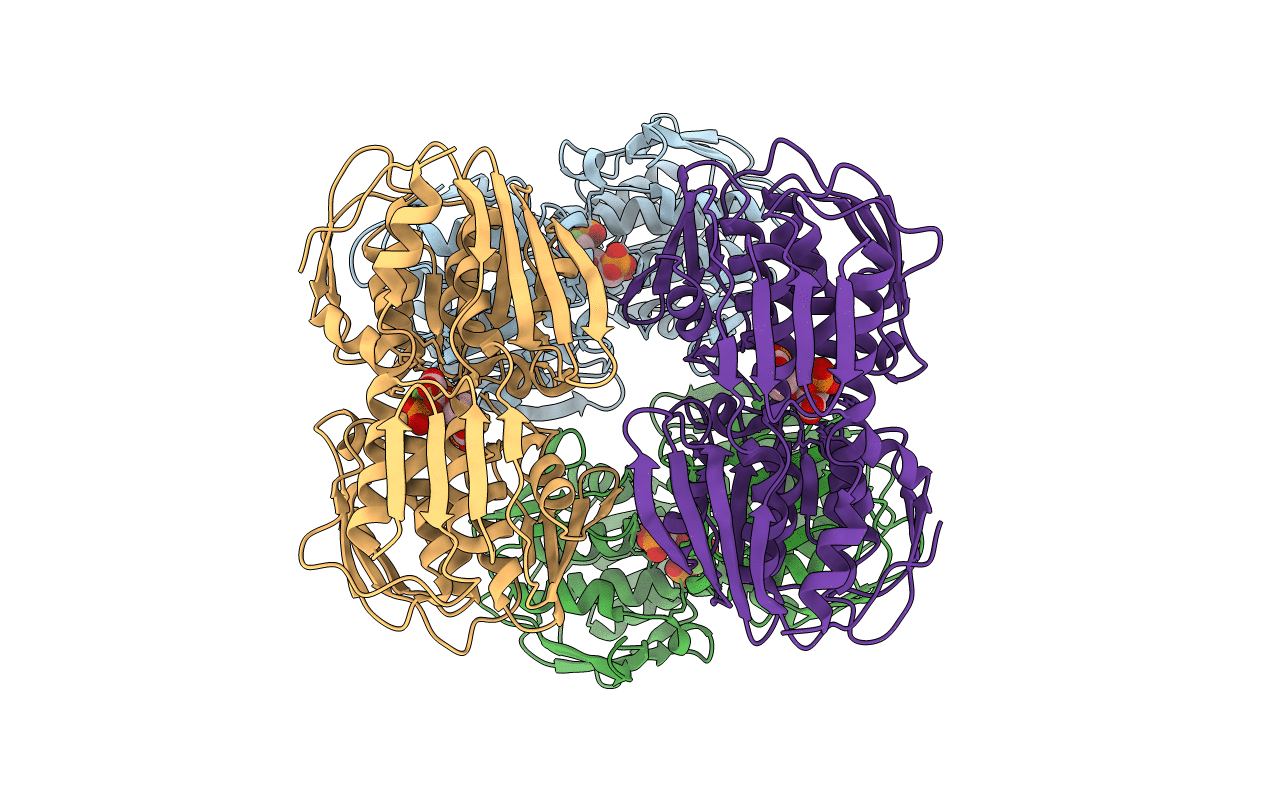
Deposition Date
2003-11-07
Release Date
2004-02-17
Last Version Date
2024-02-14
Entry Detail
PDB ID:
1RF4
Keywords:
Title:
Structural Studies of Streptococcus pneumoniae EPSP Synthase, Tetrahedral intermediate Bound State
Biological Source:
Source Organism:
Streptococcus pneumoniae (Taxon ID: 1313)
Host Organism:
Method Details:
Experimental Method:
Resolution:
2.20 Å
R-Value Free:
0.23
R-Value Work:
0.19
R-Value Observed:
0.21
Space Group:
P 1 21 1


